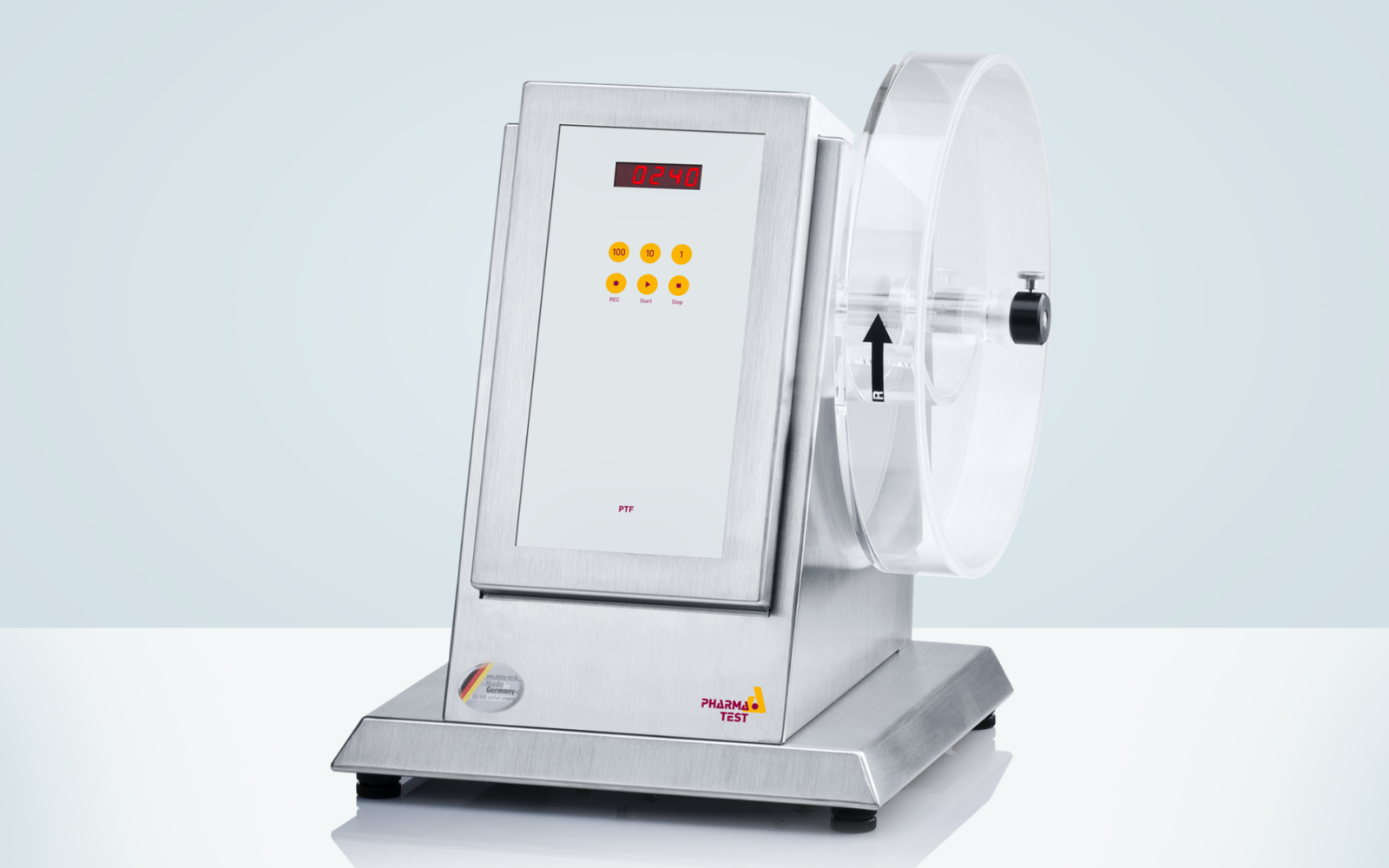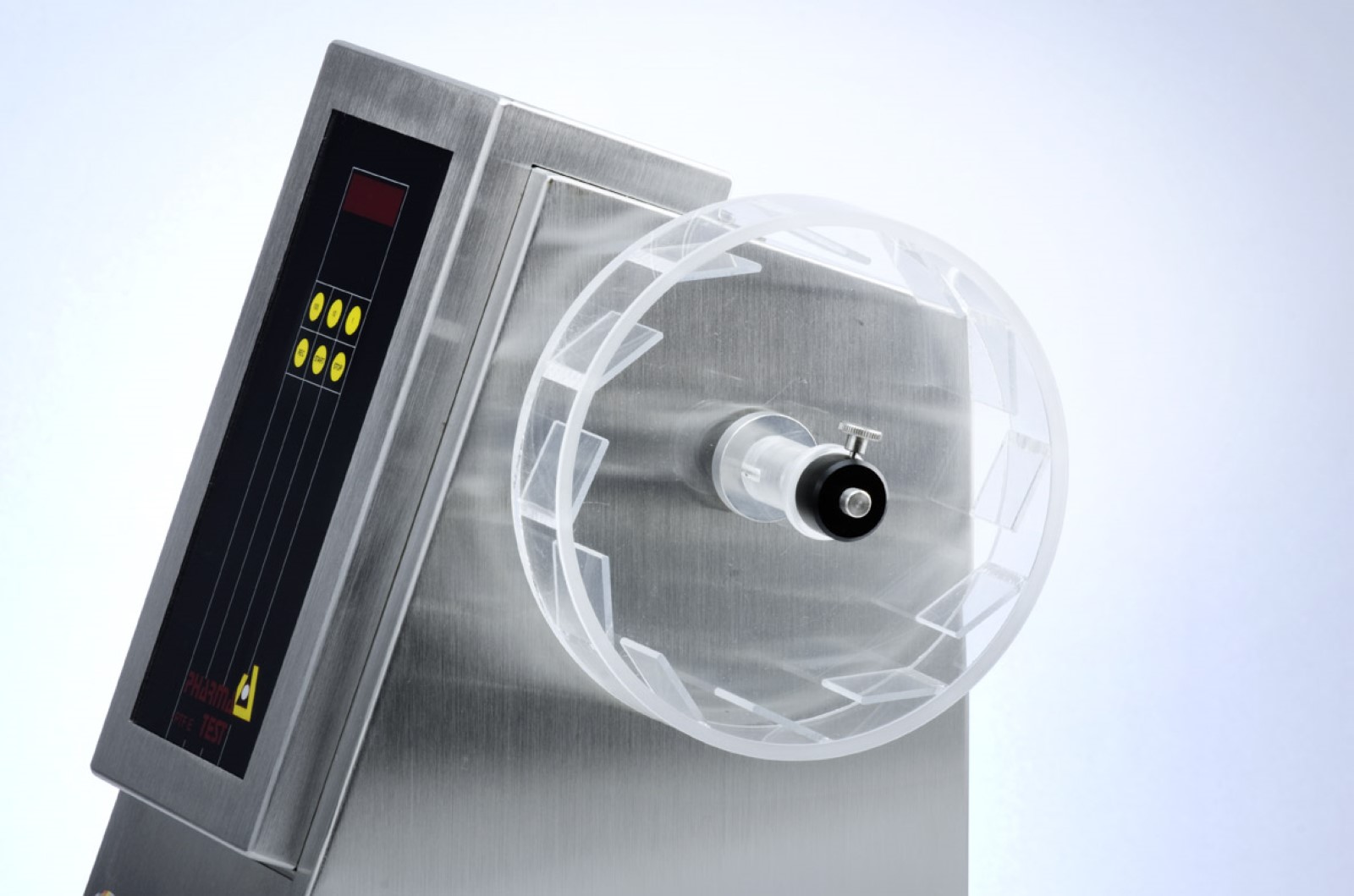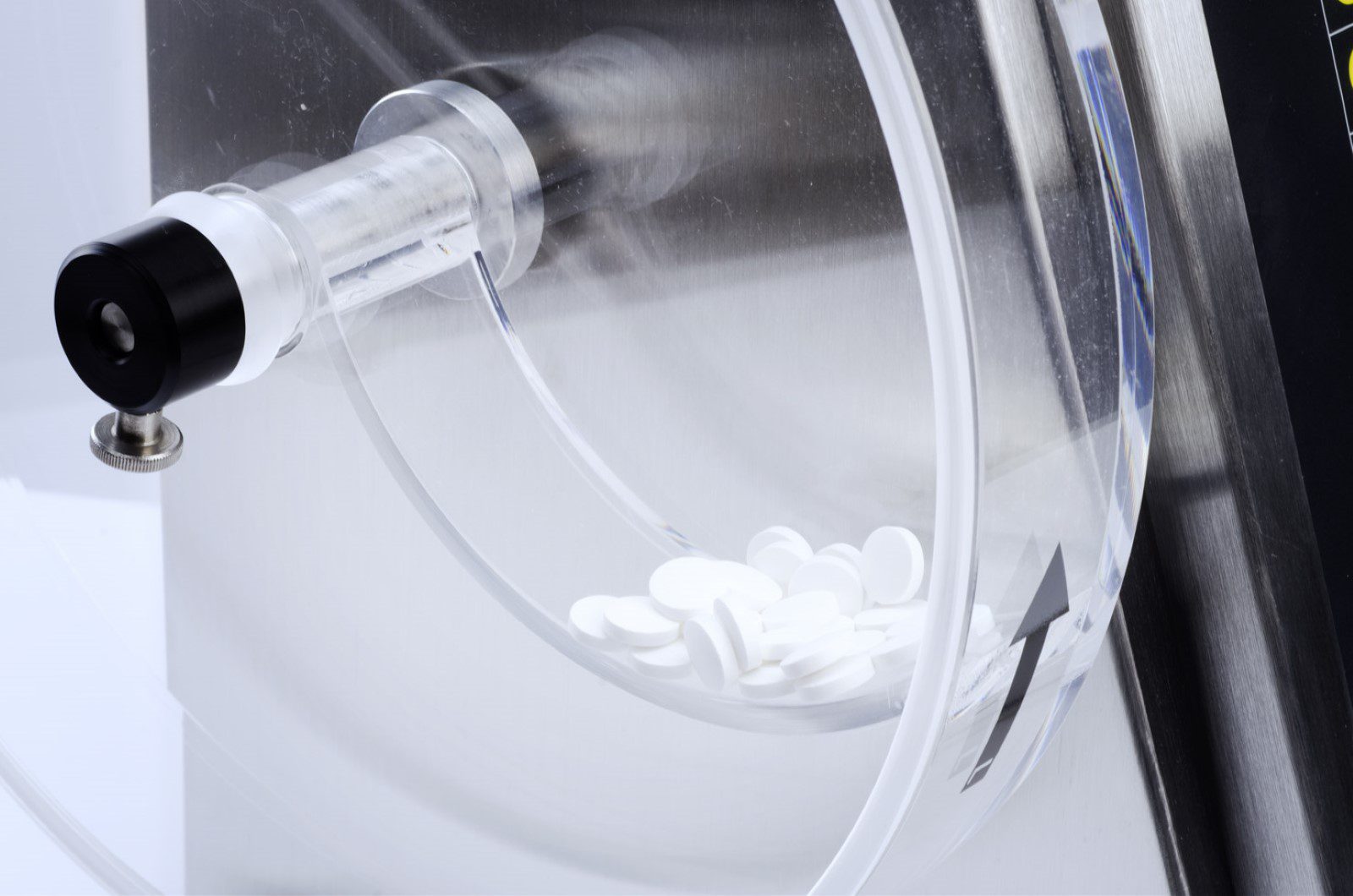PTF 10E
Tablet Friability Test Instrument
The PTF 10E single-drum tablet friability test instrument with fixed speed is manufactured in compliance to the USP <1216>, EP <2.9.7> and other Pharmacopoeias. This version is available as single or dual drum instruments.
PTF 10E
Tablet Friability Test Instrument
The PTF 10E single-drum tablet friability test instrument with fixed speed is manufactured in compliance to the USP <1216>, EP <2.9.7> and other Pharmacopoeias. This version is available as single or dual drum instruments.
General Information
One of the testing criteria of mechanical strength of tablets and cores is friability and abrasion testing. During the process of coating, transportation and packing the tablet will lose some amount of weight. To measure the weight loss, the samples are counted and weighed. Then the friability test is performed following the individual monographs of the relevant Pharmacopoeia. The tablets are tumbled at each turn of the drum of the friability testing instrument by a curved projection that extends from the middle of the drum to the outer wall.
10° Feature
Once the friability test is finished, the samples have to be de-dusted and weighed again. The weight difference before and after the test is determined as friability; this usually should not exceed 1%. Tablets of a weight >650mg or with a bigger diameter or odd shaped samples are tested while the instrument is raised on one side using collapsible feet to an angle of 10%.
Principle of Operation
The PTF E instruments operate at a fixed speed setting of 25 drum rotations per minute and are available with either one drum (PTF 10E) or two drum (PTF 20E). Clean the samples from any dust prior to the test. Weigh the samples and introduce them into any drum of the instrument. Program the test information, such as speed, time etc. and start the run. When the test is finished the drum revolution stops and the samples have to be discharged. De-dust the samples using a brush and weigh them again. The maximum mean weight loss from 3 consequent tests should not exceed 1%.



